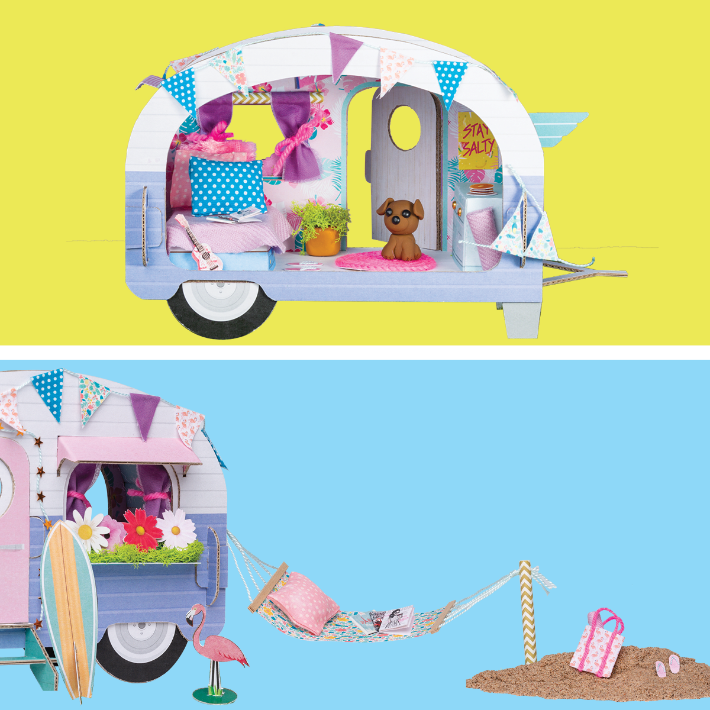Kids can design their own glamping-ready getaway with the Klutz: Make Your Own Tiny Camper craft kit. They’ll use fabric, sequins, and other materials to customize a home on wheels with more than 20 DIY accessories.
Teensy miniatures are comforting for children, who love the creative control over a space they can call their own. The set is scaled for any 3-inch tall figurine, encouraging kids to play with toys they already have in new ways.
There’s also a wide variety in the craft materials, from fabric and stuffing to mini wooden planks, yarn, sequins, clay, and more, which encourages kids to explore mixed media. This kit taps into the appeal of home designing on a small scale: Kids can choose, build, and arrange furniture to create their ideal campsite.
While the main camper fits together quickly, the smaller projects encourage patience and attention to detail, including measuring skills. The finished project is easy to scale up or down — decorate it only as much as you want. This kid includes ideas for repurposing materials from home, such as making a tiny campfire with twigs and tissue paper, and inspirational images for a custom camper renovation.






